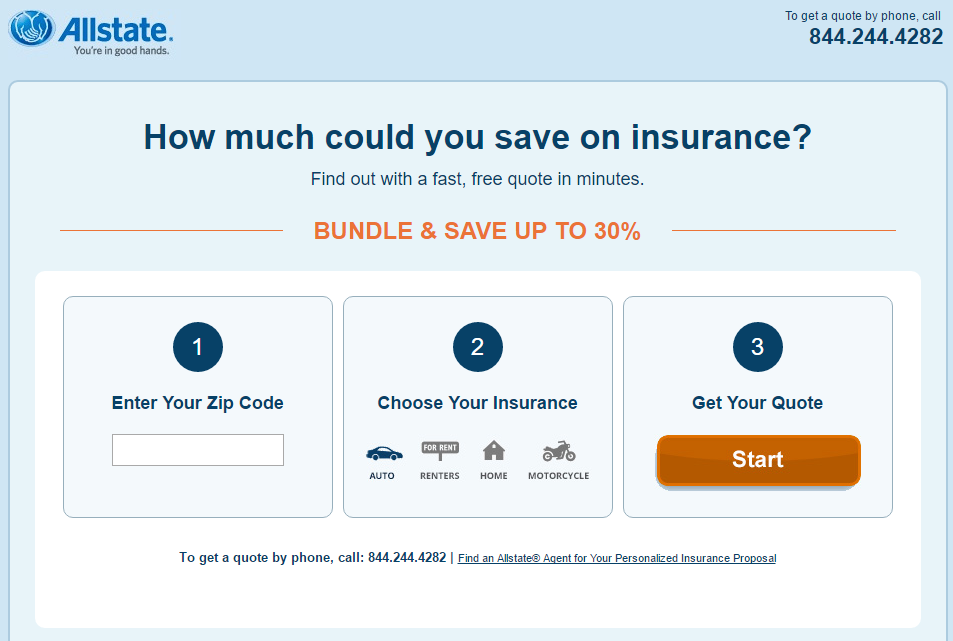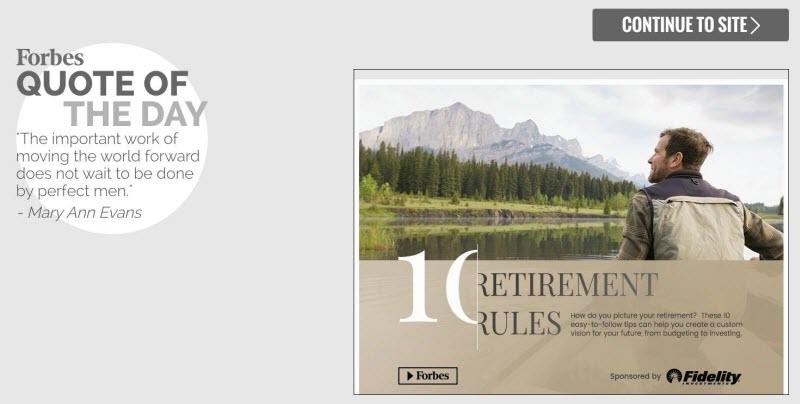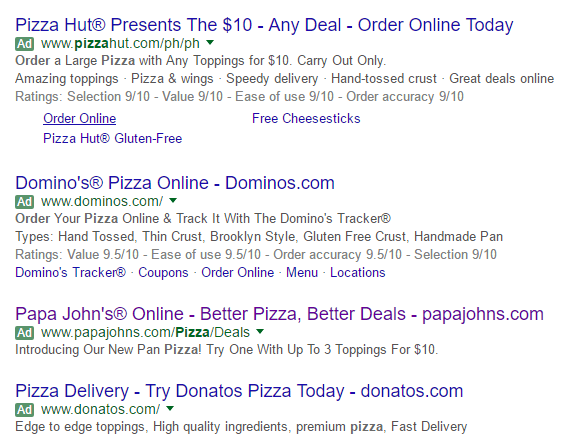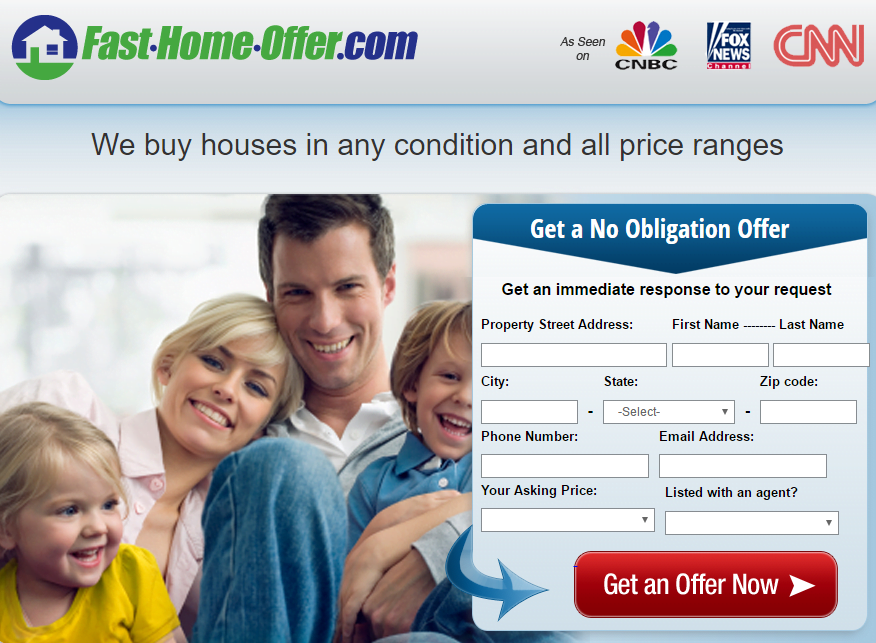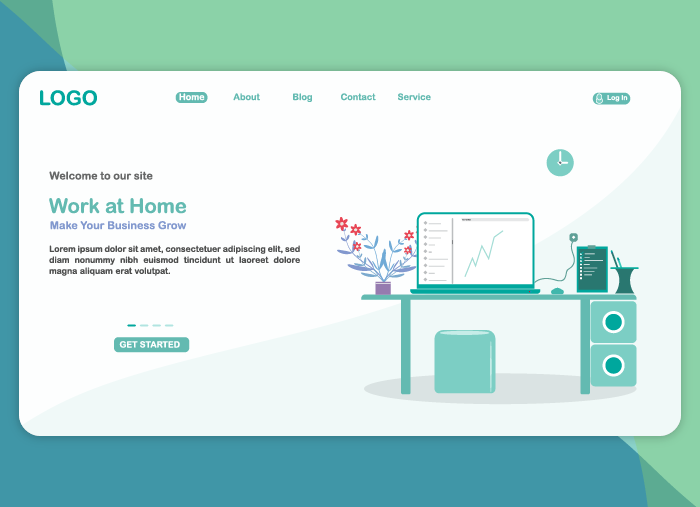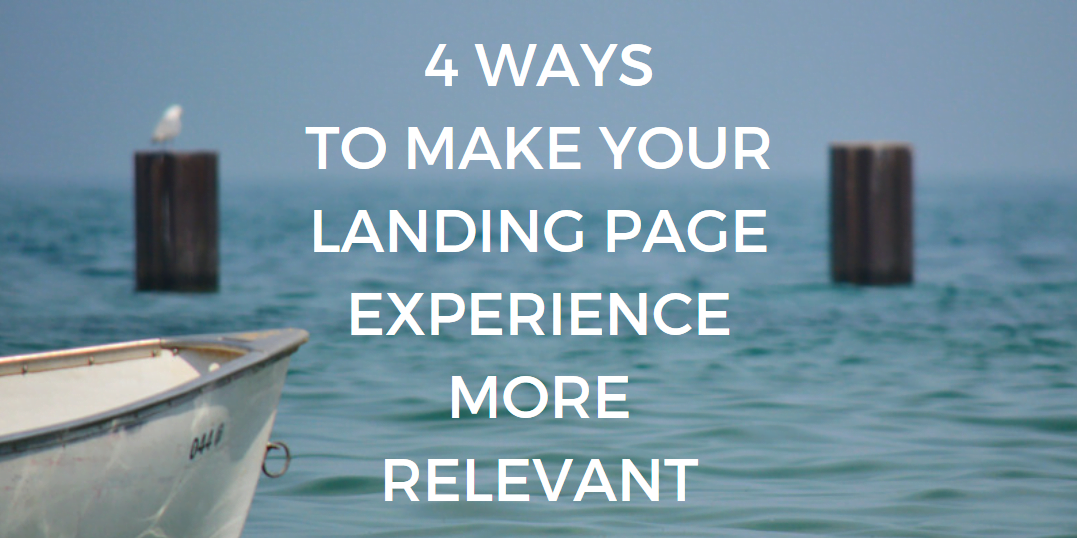
One of the major components of running a PPC ad campaign is making sure you have a relevant landing page associated with your ad. That’s because landing pages are often the first touch point a prospect has with your brand, so it’s vital you create a great first impression and deliver a great experience. Landing pages are the best tool for you to do just that.
From message matching and ease of navigation, to originality and trustworthiness, there are many ways to optimize both your landing page experience and PPC ads by making them more relevant to each other. Here are four to get you started.
1. Keep your message clear and consistent with your ad and landing page
Message Match
Although this seems like an obvious tip, you’d be surprised how many ads don’t advertise the same thing as their landing page. When you run a Google Ads (AdWords) campaign, make sure your promotion remains the same throughout your entire advertising process. This is referred to as message matching.
If your PPC ad is promoting a free trial, your landing page should also feature a free trial. If your PPC ad highlights a new white paper, the landing page should also focus on that white paper. The language in the ad should also be similar. This kind of message matching consistency helps reinforce a positive landing page experience, a variable Google uses for your Quality Score.
In the example below, we did a very basic Google search for the term “insurance.” Notice how in this example, Allstate Auto Insurance offers a clear, concise, and consistent message in both its PPC ad and its landing page. In both pieces, the consistent themes are “getting an auto insurance quote” and “switching to Allstate.”
In the PPC ad, you’ll notice extension links to “Get an Auto Quote Now” and “Switch & Save w/ Allstate.” On the landing page, you see the similar words, “How much could you save on insurance?” and then the CTA: “Get Your Quote”:
In addition, ObamacarePlans practices this tip on both their PPC ad and their corresponding landing page. First, and most importantly, some of the main keywords like “coverage,” “enrollment,” and “Obamacare” appear in several places in the ad, as well as the landing page copy.
Furthermore, the phrase “$50/month” also appears in both the ad and the landing page. This is worth mentioning because it highlights a specific dollar amount, something very attractive to many people when evaluating health insurance providers:
Call-to-Action
Your landing page CTA should also be clear and directly related to your offer. In fact, A/B testing has shown that by simply changing the CTA copy — even one word — conversions can increase by about 161%!
Therefore, it’s important that you put substantial time and effort into making sure your landing page CTA is easy to spot upon first glance and converting your visitors.
Some very simple ways to improve your landing page CTA include:
- Placing your CTA in a location where visitors are sure to see it (e.g. above the fold)
- Designing your CTA button in a contrasting color
- Using actionable and enticing words and phrases, such as “Download My Free Guide Now!”
2. Use original and engaging content on each of your landing pages
Originality
People don’t want to see the same content across all of your different landing pages. Therefore, rather than copying and pasting your content from one landing page to another, create new content for each of your various landing pages, and remember to make it unique and specific to the corresponding ad. Include different, useful information on each page that both Google and your customers alike will appreciate. This will, in turn, add value and recognition to your ads.
Engagement
If you’re executing PPC campaigns correctly, you’re sending prospects to a landing page because these standalone pages are designed to convert paid ad clicks to leads. It’s also where you establish your first impression with prospects. There are several ways you can do this:
- Speak to your visitors in a friendly tone. It is critical to use a friendly tone in both your PPC ad and landing page copy. Remember, you want them to be relevant to each other, so it’s important to use the same friendly tone with both. When writing the copy for both, think of it as speaking to somebody in your target audience — in-person — rather than online. Doing this will help your copy sound more natural, making it easier for prospects to engage with you.
- Use numbers, bullet points, and other “snackable” content. People clicking on AdWords ads for something specific don’t have the patience to read long-form copy. They want to skim and scan in hopes of finding exactly what they’re looking for. The better and more simply you communicate your message, the more your visitors will feel engaged, and the more conversions you can get.
- Consider adding a splash page. (This suggestion is only applicable if you absolutely must link to your website or homepage with your PPC ads.) Unlike a squeeze page or a landing page, this type of page doesn’t necessarily ask visitors to enter any personal information at all. The main purpose of a splash page is to simply inform visitors of something, like a company update, or share something with them, such as an inspiring quote, both of which make it much easier for your target audience to engage with you and click-through to your page.
Below is an example of a splash page that Forbes implements on its website. If you link to your website from PPC ads, that’s where the “continue to site” comes into play. However, you could use a splash page and have it click-through to your landing page with a redeemable offer (the hyperlinked Fidelity Investments image seen below):
3. Explain your Unique Value Prop to visitors immediately
Sometimes you just have to brag a little bit. Tell your potential customers why you’re unique and why they should choose you over competitors. Use straightforward and compelling selling points on both your ad and landing page in order to increase your ad ROI and improve your overall PPC campaign.
Does your service offer a free trial with no credit card required? Then say so in your ad and landing page. Has your company consistently ranked best-in-class for your product category? Make that obvious in your ad and landing page.
The example below displays the search results for the phrase “order pizza.” There are both positive and negative aspects of this example. For most people, the Pizza Hut and Domino’s ads look the most appealing because both display a variety of their best features (such as the ability to order online and high customer ratings). This is the good part.
The negative part of this example is that both of these ads click-through to each respective homepage, instead of a landing page:
As a result, both might end in less conversions than if they sent visitors to a specific landing page instead of forcing them to find the right page to order pizza.
4. Incorporate trust signals
Establishing an emotional connection with your target audience is important for you to have any success converting them to a lead or sale. To do that, incorporate trust signals on both your PPC ads and landing page.
Trust signals are always found on some of the most effective landing pages, and can take a number of different forms. Two of the most common forms of trust signals are contact information and social proof.
- Contact information. Hiding contact information from potential customers can come off as untrustworthy. Allow your business to be accessible by making your contact information visible to the public. Although you don’t want to clutter your page with unnecessary, distracting information, listing a phone number so that prospects know your business is legitimate, is a good practice. (Bonus tip: Make your phone number click-to-call so it’s even easier for visitors to convert on your landing page.)
- Social proof. This includes reviews, ratings, and/or testimonials from previous or existing customers. Capitalizing on endorsements by others is a great way of reassuring visitors that your ad, landing page, and overall brand are trustworthy. Although it may not be possible to include a full review in your small ad, you can tease prospects with a snippet of the review and post the full review on your landing page.
In the example below, Fast Home Offer included a phone extension in their ad, which makes it easy for interested prospects to call them immediately. Also, they promote the major TV networks where they’ve been featured, such as CNN, Fox News, and CNBC.
Furthermore, notice how they provide social proof with “Over 300,000 Homes Sold” and “12 Years Experience.” All of these things, especially when combined, add major trust value to the business as a whole:
What does your PPC ad and landing page process look like?
Having a message matched landing page that is relevant to your PPC ad is a game changer in the digital marketing world. It’s one of the easiest practices that helps the user experience and improves landing page conversion rates. That’s because it creates a great first impression and gets people to act. The more you can implement the tips above into your PPC ads and landing pages, the better off your campaigns will be.
What about you? How do you personalize the experience and make your landing pages relevant to ads?
About the author
Stephanie Mialki is a Content Writer for Instapage. Stephanie is a graduate of St. Bonaventure University with a Bachelor’s degree in Journalism and Mass Communication.


